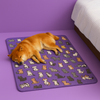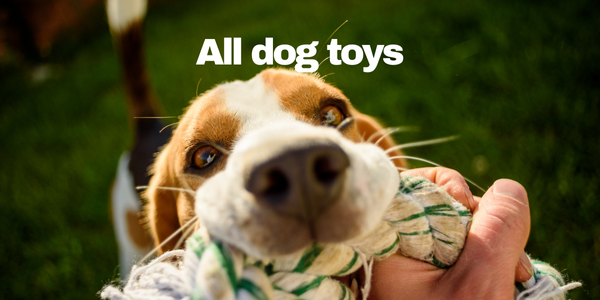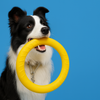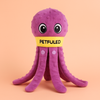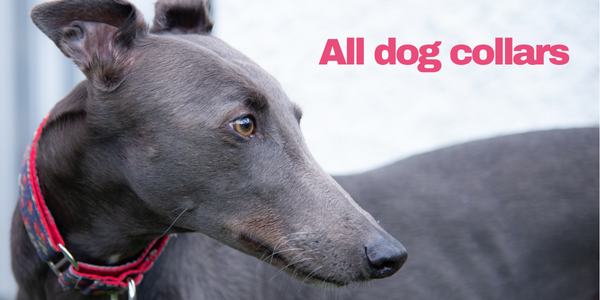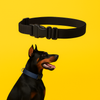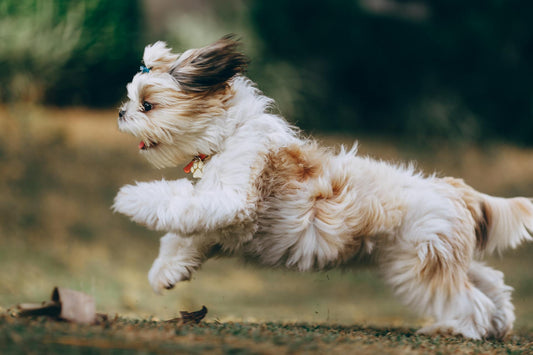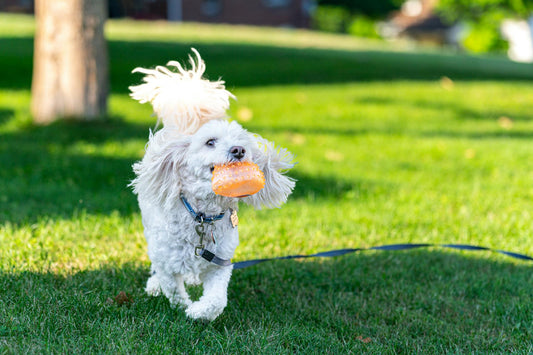If your dog never stops moving, ignores every command, or can’t seem to focus for more than two seconds, you’ve probably wondered — does my dog have ADHD?
It’s a fair question. Some dogs act as if they have endless energy, no brakes, and no attention span at all. But can a dog really have attention deficit hyperactivity disorder like humans do?
Let’s look at what’s actually happening, and how to help a high-energy dog stay calm, focused, and happy.
Do Dogs Really Have ADHD?
Technically, dogs can’t be diagnosed with ADHD the way people can.
Veterinarians don’t use that term formally — but some dogs do show ADHD-like behaviour.
This usually means:
-
High energy that doesn’t calm easily
-
Short attention span
-
Impulsiveness (jumping, barking, reacting too fast)
-
Trouble relaxing, even in quiet settings
In behaviour terms, this is often called hyperactivity or hyperkinesis.
It’s rare as a true medical condition, but overstimulation and lack of structure can create very similar patterns.
So while your dog might not “have ADHD,” they might live like they do — constantly alert, always on the go, and unsure how to switch off.
Why Some Dogs Struggle to Slow Down
Several factors influence a dog’s energy and focus:
1. Breed and genetics
Working breeds like Border Collies, Jack Russells, and Shepherds are designed for motion and task focus.
When they don’t get enough stimulation, that energy turns into restlessness or chaos.
2. Environment
Busy homes, constant noise, and irregular routines can overstimulate sensitive dogs.
They adapt by staying “switched on,” which looks like hyperactivity.
3. Lack of mental engagement
Dogs need to use their brain as much as their legs.
Without daily challenges — sniffing, searching, solving — they create their own chaos.
That’s where interactive and enrichment toys come in.
They give your dog something productive to do with all that energy.
Signs Your Dog Is Overstimulated, Not “Hyperactive”
It’s easy to mistake mental overload for bad behaviour.
Typical signs include:
-
Constant pacing or spinning
-
Barking at every sound
-
Trouble settling after play
-
Jumping or mouthing excessively
-
Fixating on toys or lights
If your dog only calms down when they’re exhausted, not relaxed, they might be overstimulated.
What they need isn’t more running — it’s structured calm.
How to Help a High-Energy Dog Focus and Relax
Helping a restless dog doesn’t mean tiring them out until they drop.
It’s about balance — using energy in smart, satisfying ways.
1. Mental enrichment
Enrichment toys and puzzle feeders encourage your dog to think, sniff, and problem-solve.
This type of focus naturally burns energy while building patience.
Start with easy puzzles, snuffle mats, or slow feeders.
You’ll notice calmer behaviour within days — mental effort is more exhausting than endless running.
2. Interactive play
Structured games like tug, fetch, or scent search teach impulse control.
They’re not random chaos — they’re cooperation.
Keep sessions short and end before your dog loses focus.
This builds discipline and trust without frustration.
Rotating toys — squeaky, rope, enrichment — prevents overstimulation and keeps curiosity alive.
3. Routine and rest
Dogs with scattered attention thrive on structure.
Consistent walk, meal, and rest times tell their brain when to be active and when to slow down.
Make rest part of training.
Teach your dog that quiet time on their bed is also rewarded behaviour.
A donut or bolster bed in a calm corner helps signal “this is where we relax.”
Physical comfort encourages emotional calm.
4. Calming toys and textures
Some dogs soothe themselves through chewing or gentle play.
Soft plush or sensory toys can reduce restlessness, giving their mouth and mind something safe to focus on.
Look for toys with texture variety or slow feedback rather than constant noise.
These satisfy natural needs to lick, mouth, and decompress.
When to Ask for Professional Help
If your dog’s hyperactivity feels extreme — constant panting, pacing, or difficulty learning — a vet or behaviourist can rule out medical or anxiety-related causes.
Thyroid imbalance, allergies, or pain can mimic hyperactive symptoms.
But in most cases, what looks like ADHD is simply too much energy without enough direction. Once you give that energy purpose, focus comes naturally.
The Bottom Line
Dogs don’t really have ADHD — but they can experience life the same way: distracted, restless, and overstimulated.
What they need isn’t medication or correction, but structure, engagement, and calm routines.
Interactive and enrichment toys are powerful tools for this.
They turn energy into focus and chaos into confidence.
When your dog’s brain is busy in the right way, their whole world — and yours — becomes calmer.
A few toys to help high-energy dogs find focus and balance: enrichment puzzles, interactive play toys, and calming plush favourites for quiet time.














